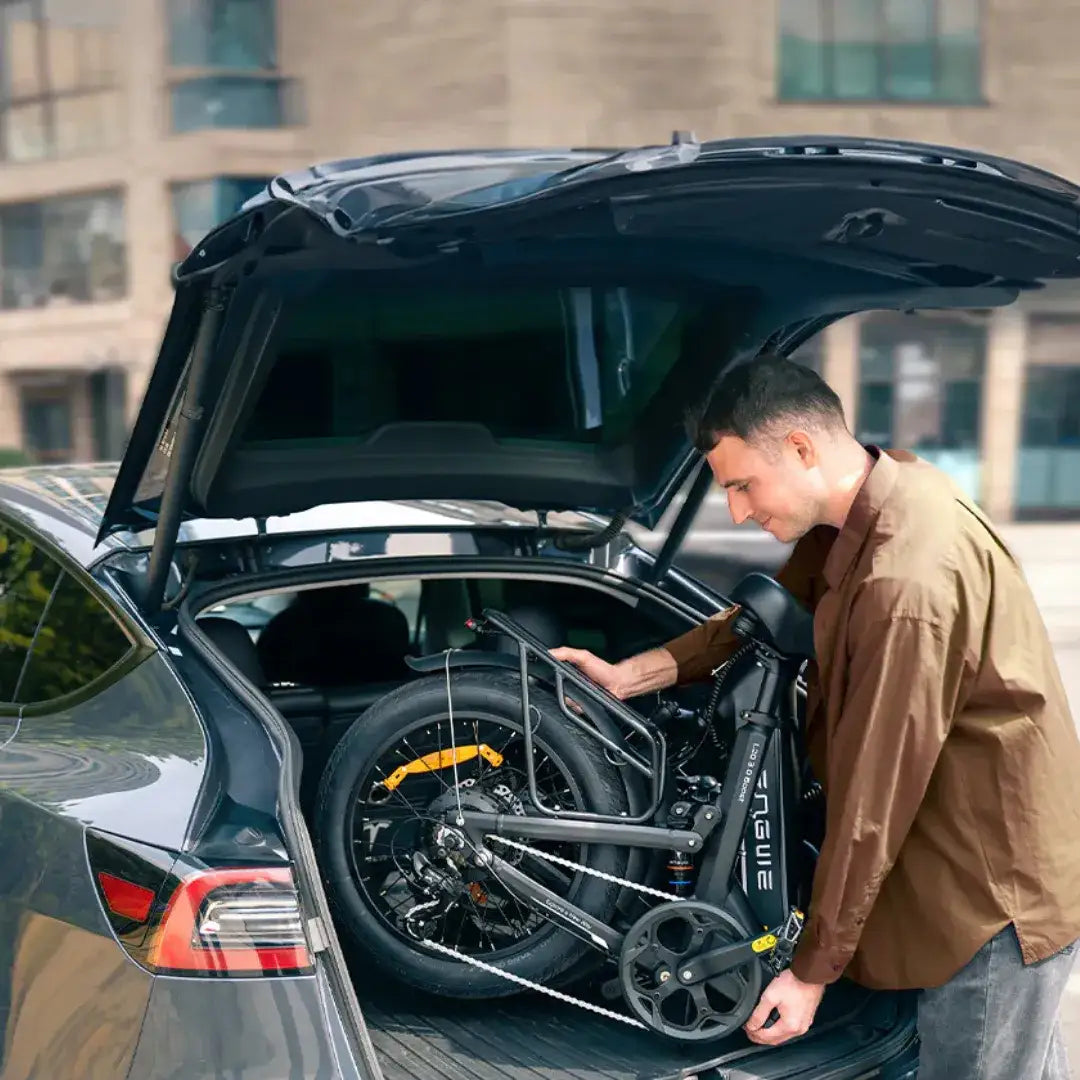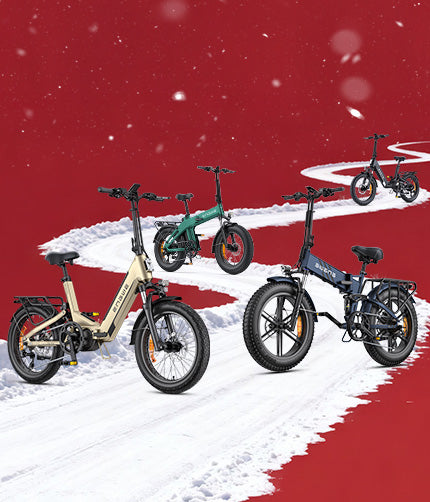1. Understanding Volts, Amps, and Watts
Electric bike buying commonly comes down to one crucial question: what are you looking for in selecting the right source of power for your rides? The battery, which can range from 36V, 48V, or 52V, is one of the primary factors that will determine your e-bike’s performance, power, and overall feel. Governments around the world have these distinct systems to allow techs to distinguish and detect parts, but riders need to be able to compare e-bikes dependent on a criterion that varies considerably. For a better understanding, in this article, I will compare battery systems on five dimensions. First, the fundamentals: Before you can compare these systems properly, the novice needs a primer on basic concepts that quantify the capacity of an e-bike’s battery. Imagine electricity like water flowing through a hose. Volts, the pressure, determine with how much power the current is racing to the engine. Amp-hours are an effective metric of battery strength, like the reservoir of water, a pseudo count to how much the battery can maintain the current. Therefore, Watt-hours are the ultimate energy metric, which is the most significant indicator of overall battery capacity because its voltage x amp-hour indicates the total energy in the battery. A higher-voltage solution can provide the same power with significantly less current, which frequently results in increased performance and control and keeps the system cooler and more efficient, especially when it is low.
Voltage: This is the potential for power. Higher voltage = the system can push energy to the motor more quickly and forcefully. This directly translates to acceleration and climbing power. It is the “strength” of your e-bike’s electrical system.
Amp-Hours: This is a measurement of battery capacity. 15Ah means the battery can deliver one amp of current for 15 hours. A higher Ah rating, at the same voltage, means more potential range.
Watt-Hours: This is the ultimate measure of battery capacity and the only really reliable figure for comparing how far you can go with two different electric bike batteries. For instance, a 48V 15Ah battery offers you 720Wh of energy.
Don’t just look at Voltage or Amp-hours. Always calculate Watt-hours: V x Ah to get a real comparison of the battery’s total energy capacity. This allows you to realize – more than any other number – how far you can go on a single charge.
| Term Used | Analogy | What It Means for You |
|---|---|---|
| Voltage (V) | Water pressure | Affects acceleration and your hill climbing power. |
| Amp-Hours (Ah) | Size of water tank | This is a primary factor in what your maximum range will be. |
| Watt-Hours (Wh) | Total water available | This is the best physical number of a battery’s capacity measure. |
2. Performance and Power Output: How Each System Feels
The most direct influence on the way an e-bike feels to ride is the voltage of your e-bike battery. It directly affects the motor’s responsiveness and ability to handle more intense terrain. Each amount of voltage provided is intended for specific types of riding and riders, ranging from urban cruising to all-out off-road adventures. Comparing the performance will help you buy a bike to avoid one that feels underpowered on the hills or overpowered and inefficient in your daily flat commute.
36V Systems
- Best For: This mode is ideally suited for assured riders ambling around a city or for surroundings that aren't excessively steep to handle.
- Feel: A relaxed, forgiving support. The push is acknowledged but not shocking, suitable for a loose and facile posture even in stressful intersections.
- Limitations: It could feel apathetic on mountains or when it holds a lot of weight. It might be a stretch to describe the motor as quick under tough circumstances.
48V Systems
- Best For: This line would be acceptable for any rider. This is the market standard for a reason. It provides a nice mix of power, dimensions, value, and efficiency. Great for commuting to the hillside, recreational trail paths, and carrying luggage.
- Feel: A noticeable rise in output. The bike’s force is pleasing, making hills feel pleasant, practically effortless to climb. It creates a secure ride in most scenarios.
- Advantages: This category provides excellent performance for those looking to upgrade from 36V without paying the premium to go to 52V.
52V Systems
- Best For: Performance enthusiasts, serious off-road riders, and those who demand the absolute best in hill-climbing power and acceleration.
- Feel: Offers thrilling, almost motorcycle-like acceleration. It devours steep inclines and provides the highest level of torque and sustained power, making it ideal for conquering the most demanding trails.
- Considerations: Often comes at a premium cost and can be grossly overkill for average use while also potentially providing even worse miles per charge on flat ground if not properly managed.

3. Choosing the Right E-Bike: Spotlight on a Superior 48V Option

Ultimately, choosing the right voltage is a matter of finding the e-bike that suits the user’s lifestyle best. For most people, this means that a 48V system allows them to enjoy both thrilling power and practical daily usability, and this is where brands like ENGWE truly shine. Rather than get lost in endless specifications, it is often more useful to illustrate the clear value of a well-done example. The ENGWE EP-2 3.0 Boost is a perfect representative of a 48V system, offering flawless execution perfect for all-terrain adventures. Built for uncompromising riders that will take it on both urban streets and mountain trails, it is a model worth checking out for anyone seeking a smart and powerful ride.

The key features that make ENGWE EP-2 3.0 Boost’s 48V system so useful include:
- Powerful Motor: The motor boasts a 75Nm Boost mode for exhilarating acceleration and the ability to effortlessly climb steep hills.
- High-Capacity Battery: The 48V 13.5Ah battery is detachable and long-distance capable with up to 120 km potential range in pedal-assist mode, which is enough for most riders to feel comfortable exploring.
- Intuitive Riding Experience: The EP-2 3.0 Boost features an all-new torque sensor for a much smoother and natural power assist experience; you no longer feel the motor pushing you, but rather that you have superhuman legs.
- Premium Components: Powerful hydraulic disc brakes provide plenty of reliable stopping power in all conditions, a must-have safety feature for a powerful e-bike.
- User-Focused Design: The EP-2 3.0 Boost comes with a fast charger that charges the battery in about 3.5 hours, massive 20″ x 4.0″ all-terrain fat tires for a smooth ride, a foldable design for easy storage, and a smart app connection.
4. Range, Efficiency, and Charging Considerations
Although the Watt-hours of a battery is already the best metric to get you started on range calculations, operating voltage still slightly factors into efficiency. An electric system that operates at a higher voltage can indeed be more efficient, especially when under load. That’s because more power at a given voltage level equals less current. The less current you have to pull to generate a certain amount of power, the less heat will be created in the motor and controller, equivalent to less energy being wasted. Accordingly, on a long, steep hill, a 48V or 52V system may indeed be using the stored energy more efficiently than a 36V system, getting better-than-expected results in terms of range in hilly terrain.
Maximizing Range
- Use Lower Assist Levels: Remember that the biggest factor in how far you can ride is how much you use the motor. You can ride in PAS 1 on the flats.
- Maintain Tire Pressure: Properly inflated tires have less rolling resistance, thus more miles.
- Smooth Pedaling: Try to avoid hard acceleration and braking, and shifting to maintain a steady cadence is more efficient than crude pedaling.
Charging Best Practices
- Use the Right Charger: Always use the charger that came with your bike.
- Avoid Extreme Temperatures: Don’t leave your battery out in the sun to charge or store it in freezing conditions; room-temperature storage is best.
- Smart Storage Tip: Do not store your battery for a month or longer either fully empty or fully charged. Leaving it at about an 80% charge for storage is best as it causes less stress on the battery.

5. Cost, Compatibility, and Long-Term Ownership
The purchase price is only one part of the equation; one must also consider long-term costs and compatibility. As the voltage and capacity of an e-bike battery increase, so does its cost. Therefore, your total cost is also affected over the life of the bike. Additionally, it is important to understand that the bike battery, the e-bike’s controller, and the motor are a matched set. You cannot simply swap components between voltage systems.
Initial and Replacement Costs
- 36V Systems: The cheapest option, found on more budget-friendly e-bikes, with the cheapest replacement batteries.
- 48V Systems: An average cost, but perhaps the best value proposition, given the performance on offer.
- 52V Systems: The highest price, found on high-performance, premium e-bikes, and accordingly for their replacement batteries. Before purchasing an e-bike, be sure to check the cost and availability of a replacement battery. These future costs can vary widely between brands.
System Compatibility
- The Holy Trinity: The battery, controller, and the motor are designed to work together at a specific voltage.
- No “Easy” Upgrades: You can’t put a new 48V battery on a bike designed for a 36V system— there are no “compatible upgrades” for a voltage change. Doing so will likely destroy the controller and potentially the motor. A voltage upgrade requires replacing all three components.
- Focus on Quality: Additionally, invest in a bike from a reputable manufacturer. They use quality cells.
Frequently Asked Questions
-
Is a 52V battery always better than a 48V one?
Not necessarily. While a 52V battery offers more power, it is best for aggressive riders who really need all the performance when they climb steep hills. Your commute and recreation on less steep terrains can be more balanced, efficient, and cheaper using a 48V system. -
Which voltage is best for a long, hilly commute?
A 48V system is the best choice for a very long commute with lots of hills. It provides just enough power to burn off the hills without the premium cost of a 52V system. Additionally, it is more efficient and reliable for long-term heavy use. -
Is it possible to use another brand’s battery for the e-bike with the correct voltage?
We do not recommend doing that. The battery pack’s physical structure, communication protocol with the controller, and Battery Management System (BMS) are usually proprietary and cannot be guaranteed to work safely. Thus, you shouldn’t put another manufacturer’s battery on your e-bike even if the voltage is the same because it may be dangerous.
In the end, adapting your battery’s voltage to the riding style you prefer will deliver the best possible experience for your e-bike.









